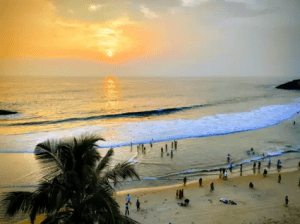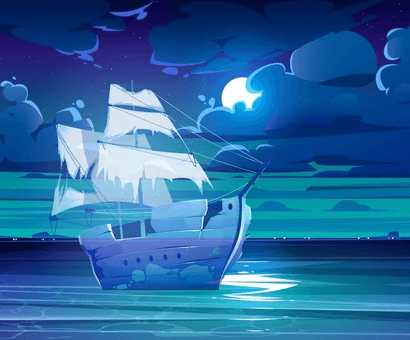
Our planet is covered mostly by water, and where the land meets the sea, something magical happens — coastal ecosystems come to life. These vibrant zones are not just beautiful; they are the heartbeat of marine biodiversity and crucial for human survival. Yet, as strong as they seem, coastal ecosystems are fragile. Let’s dive into their world, understand their beauty, and learn how to protect them.
Contents
What Are Coastal Ecosystems?🐟
To begin with, coastal ecosystems are natural environments found where the land touches the ocean. They include mangroves, coral reefs, salt marshes, dunes, estuaries, and seagrass meadows. Each one is unique, but they all share one important thing: they support a wide range of life forms.
For instance:
-
- Mangroves act like natural barriers, protecting shores from storms.
- Coral reefs are underwater cities full of color and fish.
- Seagrass meadows clean the water and feed marine animals.
- Salt marshes absorb carbon and prevent floods.
Together, these ecosystems create a shield that balances nature’s power and keeps our coastlines alive.
However, as we move forward, we’ll see why these areas are more vulnerable than they appear.
The Fragility Behind Their Strength🐟
At first glance, coastal ecosystems seem unstoppable — waves crash, tides shift, and life continues. Yet, under the surface, they are incredibly delicate. Why? Because they depend on specific conditions like water temperature, salinity, and clean habitats. Even a small disturbance can cause massive changes.
Moreover, human activity has been the greatest disruptor. Let’s explore some of the main threats step by step. If you love the ocean’s gifts, don’t miss our delicious guide to 5 Recipes with Pikeperch: A Journey Through Flavor and Tradition.
1. Pollution: The Silent Invader
Firstly, pollution is one of the most harmful enemies. Every piece of plastic thrown away, every drop of oil spilled, and every chemical washed into rivers eventually ends up in the sea.
-
- Plastics choke turtles and seabirds.
- Chemicals create dead zones with no oxygen.
- Oil spills cover coral and stop them from breathing.
As a result, even the smallest act of negligence can destroy years of natural growth.
Fortunately, reducing waste and using eco-friendly materials can make a big difference.
2. Climate Change: A Global Wave of Change🐟
Secondly, climate change affects coastal ecosystems in multiple ways. Rising sea levels flood mangroves and marshes, while warming oceans bleach coral reefs. Additionally, extreme weather events such as hurricanes and cyclones are becoming more frequent and intense.
For example:
-
- Coral reefs die when water becomes too warm.
- Mangrove forests drown as tides rise higher each year.
- Coastal erosion increases, threatening both people and wildlife.
Because of this, coastal resilience depends on urgent global action. We must reduce greenhouse gases, protect wetlands, and restore degraded habitats.
3. Overfishing: Taking Too Much from the Sea
Another major threat is overfishing. Many fish species that depend on coral reefs or mangroves are disappearing because humans take more than nature can replace.
In simpler terms: “When we take too much, the ocean has too little to give back.”
This imbalance damages not only fish populations but also the entire food web — from the smallest shrimp to the largest predator. However, by supporting sustainable fishing practices and marine reserves, we can give the ocean time to heal.
4. Coastal Development: Building on Fragility
Finally, urban development along coastlines has a huge impact. Hotels, ports, and cities often replace wetlands and dunes. Although tourism and trade are important, they must be balanced with conservation.
Each building or road can change natural water flow and destroy habitats that took centuries to form.
Therefore, sustainable planning is essential — one that respects both economic needs and ecological limits.
Why Coastal Ecosystems Matter So Much🐟
Now that we understand the dangers, it’s time to appreciate what these ecosystems give us. Their benefits are countless and priceless.
Environmental Benefits
-
- They store carbon, helping to fight climate change.
- They protect coastlines from erosion and flooding.
- They purify water naturally.
- They support biodiversity, providing homes to thousands of species.
Economic and Social Benefits
-
- Coastal areas attract tourism, which sustains local economies.
- They offer food resources such as fish and shellfish.
- They create jobs in fishing, tourism, and research.
Without these ecosystems, millions of people would lose their livelihoods and protection from natural disasters. Consequently, preserving them is not just an environmental issue — it’s a human survival mission.
How Can We Protect Coastal Ecosystems?🐟
Luckily, there is still hope. Around the world, communities are taking action to restore and protect coastal ecosystems. You, too, can make a difference.
Individual Actions
-
- Reduce plastic use and recycle properly.
- Avoid harmful products like chemical sunscreens that damage coral reefs.
- Participate in beach cleanups or plant mangroves.
- Educate others about ocean conservation.
Community and Government Efforts
-
- Support marine protected areas (MPAs).
- Promote eco-tourism instead of mass tourism.
- Encourage policies that limit pollution and coastal destruction.
- Restore degraded mangroves, dunes, and reefs through reforestation projects.
Step by step, these actions can rebuild the balance between humans and nature.
After all, coastal ecosystems are resilient — they just need our help to recover.
A Future Built on Awareness🐟
As we move forward, awareness becomes our strongest tool. Every article read, every child educated, and every project funded brings us closer to a sustainable future.
Imagine a coastline where coral reefs glow with life, mangroves dance with the tides, and birds soar freely across the horizon. That vision can become reality if we all act together — governments, scientists, and citizens alike.
Remember, the ocean connects us all, and by protecting its edges, we protect our shared home. For a touch of mystery beyond the waves, explore the fascinating world of Supernatural Ship Stories: Ghosts, Legends, and Mysteries at Sea.
The Fragile Beauty Worth Saving🐟
In conclusion, coastal ecosystems and their fragility remind us that nature is both powerful and delicate. They give us oxygen, food, and protection, yet they depend on our respect and care.
Through small steps, consistent education, and global cooperation, we can preserve the magic of the coasts for generations to come.
Let’s not wait until the tides wash away what we can still save today.


